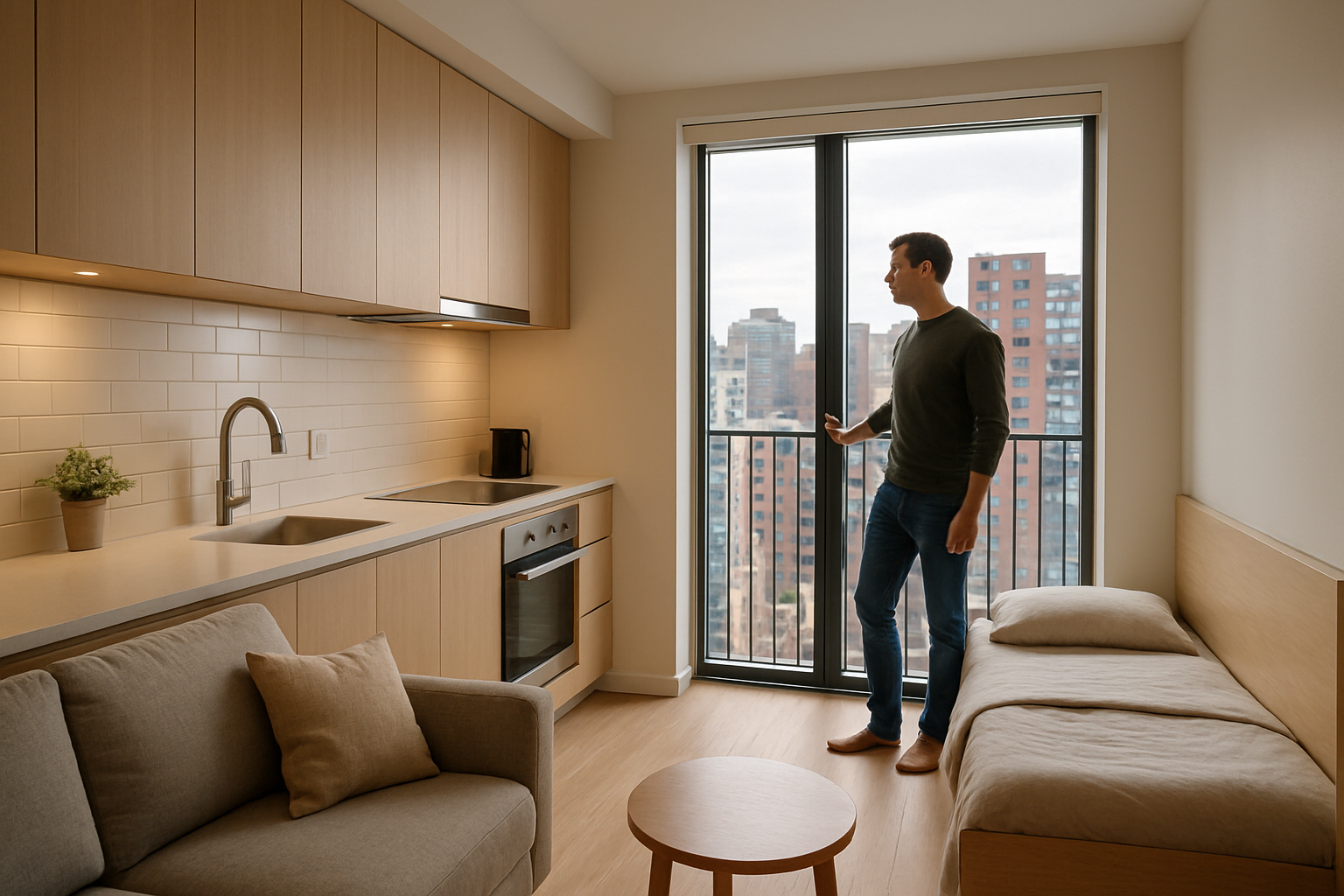Micro-Unit Living: Maximizing Urban Space and Affordability
The real estate landscape is witnessing a shift towards compact living solutions in dense urban centers. Micro-units, typically spanning 200-400 square feet, are gaining traction as a viable housing option. This innovative approach to urban living addresses affordability concerns while maximizing space utilization in congested cities. As property prices soar and urban populations grow, micro-units offer a fresh perspective on sustainable urban development and lifestyle choices.

Economic Drivers Behind the Trend
The rise of micro-units is largely driven by economic factors. In major cities, housing costs have outpaced wage growth, pricing out many young professionals and middle-income earners. Micro-units offer a more affordable entry point into desirable neighborhoods. For developers, these units maximize rentable square footage, potentially increasing overall property yields. This alignment of tenant demand and developer incentives has fueled the micro-unit movement in urban real estate markets.
Design Innovations in Small-Space Living
Architects and designers are at the forefront of the micro-unit revolution, developing ingenious solutions to make small spaces both functional and comfortable. Multi-purpose furniture, such as murphy beds and convertible tables, is standard in these units. Vertical space utilization through lofted sleeping areas or high storage solutions maximizes every inch. Some developments incorporate shared amenities like co-working spaces, lounges, and rooftop gardens to complement the compact private living areas.
Target Demographics and Lifestyle Implications
Micro-units primarily appeal to young professionals, students, and single urbanites prioritizing location over space. These demographics often value experiences and urban amenities over large living quarters. The micro-unit lifestyle promotes minimalism and efficient living, aligning with growing environmental consciousness among younger generations. However, it’s not just millennials embracing this trend; empty nesters and frequent travelers are also finding value in these compact, low-maintenance homes.
Regulatory Challenges and Urban Planning Considerations
The integration of micro-units into existing urban fabrics presents both opportunities and challenges for city planners. While these units can increase housing density without drastically altering neighborhood aesthetics, they also raise concerns about overcrowding and strain on local infrastructure. Many cities are grappling with how to balance the need for affordable housing with maintaining quality of life standards. Some municipalities have implemented pilot programs to assess the impact of micro-units before wider adoption.
Investment Potential and Market Outlook
For real estate investors, micro-units present an intriguing proposition. In hot urban markets, these units often command higher per-square-foot rents than traditional apartments. However, they may also face higher turnover rates and maintenance costs due to more frequent tenant changes. The long-term investment potential depends largely on sustained demand and regulatory support. As remote work trends evolve post-pandemic, the appeal of urban micro-living may shift, requiring investors to closely monitor demographic and workplace trends.
Challenges and Criticisms of Micro-Unit Living
Despite their growing popularity, micro-units face criticism from various quarters. Some argue that they represent a compromise in living standards, potentially leading to psychological stress from confined living. There are concerns about the long-term societal impacts of normalizing such small living spaces. Critics also point out that while micro-units address affordability issues, they don’t solve the underlying problems of housing supply and urban inequality.
The Future of Urban Housing: Beyond Micro-Units
As cities continue to evolve, micro-units may be just the beginning of innovative urban housing solutions. Some futurists envision modular, adaptable living spaces that can expand or contract based on residents’ needs. Others predict a rise in co-living arrangements that blend private micro-units with extensive shared facilities. The future of urban housing likely lies in a diverse mix of options, with micro-units playing a significant role in providing affordable, location-centric living options.
Conclusion: A New Chapter in Urban Real Estate
Micro-unit living represents a significant shift in urban housing paradigms. As cities grapple with affordability and density challenges, these compact dwellings offer a potential solution that resonates with changing lifestyle preferences. While not without controversies, micro-units are reshaping conversations about urban development, affordability, and the nature of home in the 21st century. As this trend evolves, it will undoubtedly continue to influence real estate markets, urban planning strategies, and the very fabric of city life.





